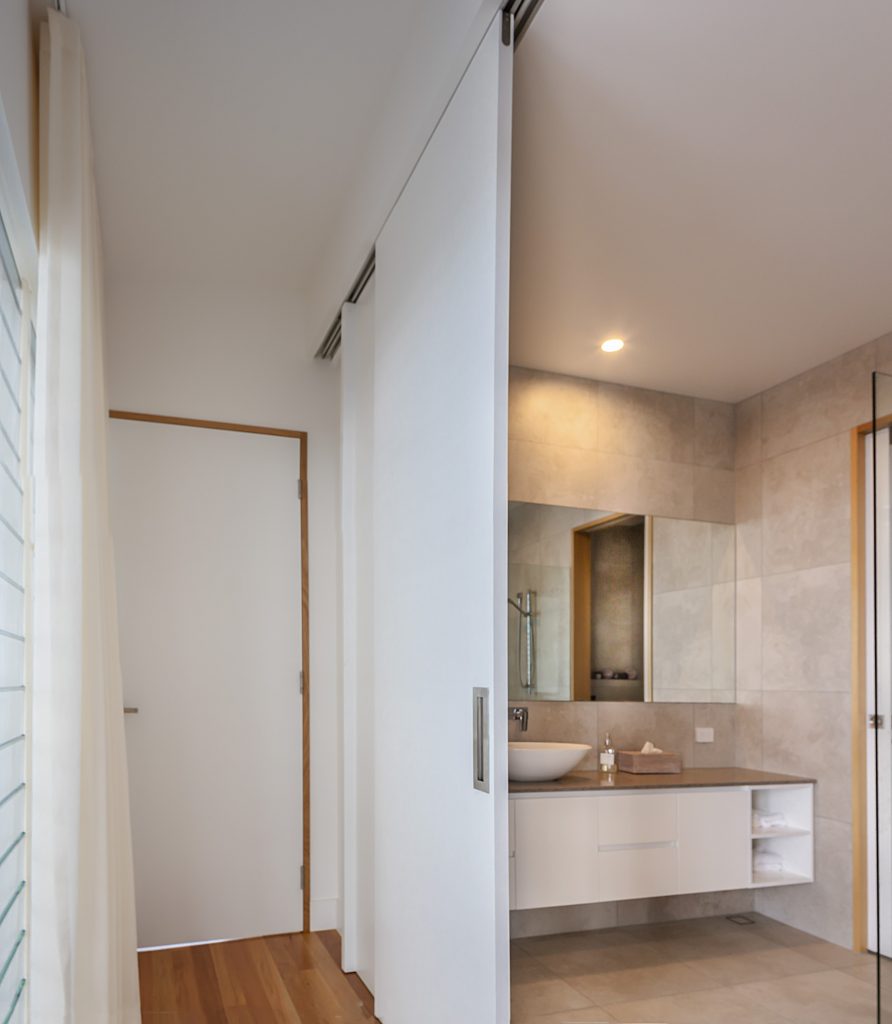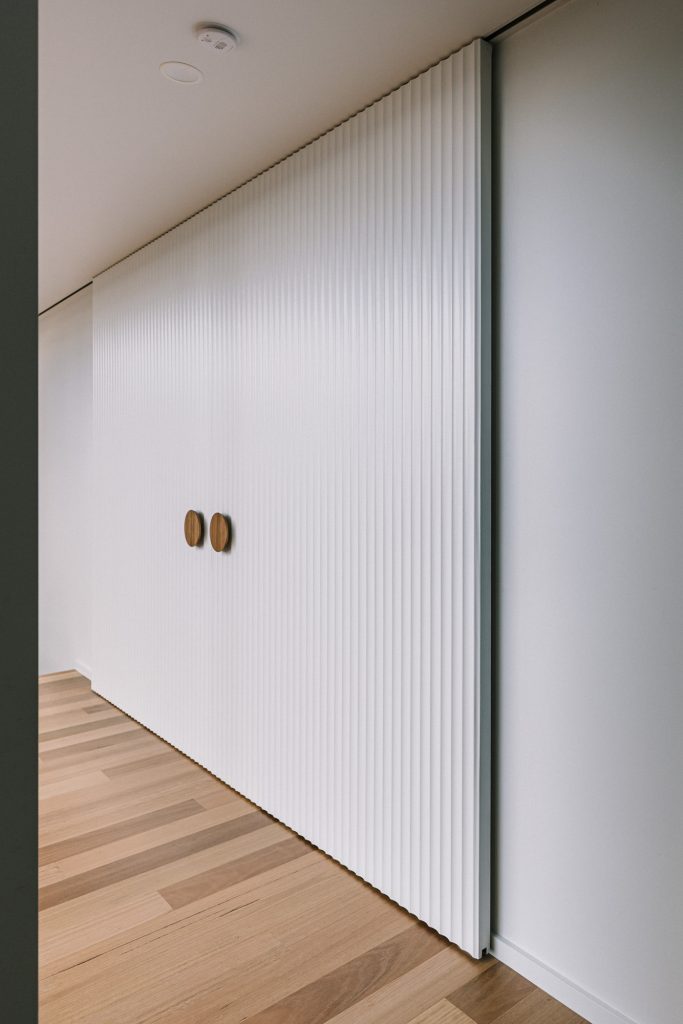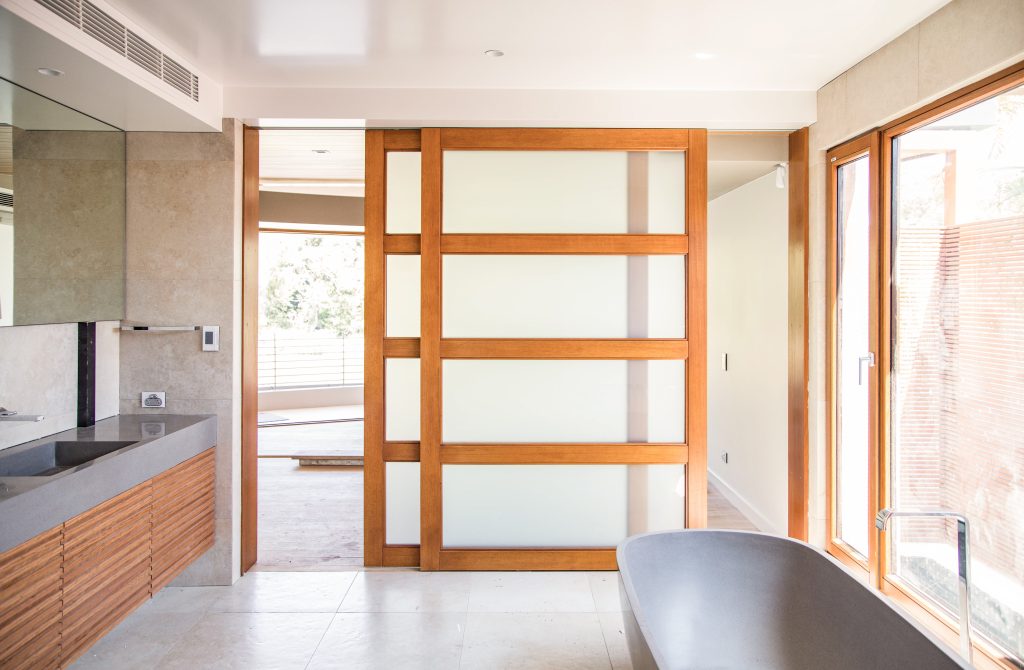Zone Out Different Spaces with a Face-of-Wall Sliding Panel

One of the standout features of face-of-wall sliding doors is their ability to efficiently divide open living spaces into distinct functional areas. Imagine a minimalist custom joinery wall that conceals an apartment’s functional necessities – sleeping, storage, and an office niche – all behind a sliding panel. This panel, not only housing a mounted TV but also a fold away bed and office space, dynamically transforms the living area based on daily requirements. By day, using the floor to ceiling sliding door, the bed folds away, revealing the office space, and by night, it conceals the office niche, elegantly creating a bedroom space.
Saves Valuable Floor Space

Maximizing floor space is a perpetual challenge in interior design, and face-of-wall sliding doors offer an effective solution. By seamlessly integrating with the surrounding joinery, these doors create a sense of continuity throughout the space. Custom sliding doors, matching the existing aesthetic, provide privacy without compromising usable area. In a one-bedroom apartment, for example, sliding doors can effectively transform the open layout into an adaptable home with distinct zones for different family activities.

Two Surface Sliding Doors for Added Impact
For those looking to cover more surface area, the installation of double sliding doors can be a game-changer. For example, a wood slat partition paired with a flush panel door made from matching veneer can create a striking feature, covering entertainment units or shelving. The versatility of these doors allows them to be slid along the wall to reveal or conceal various functional elements like study niches or additional storage, enhancing both aesthetics and functionality.
Allow Light to Flow Through Translucent Doors

In spaces with limited natural light sources, maintaining illumination while ensuring privacy can be challenging. Translucent face-of-wall sliding doors provide an elegant solution. For instance, in a small apartment illuminated primarily by a balcony window, translucent doors between the living room and bedroom enable natural light to permeate the entire space. This clever use of sliding doors can also double as closet doors, ensuring a balance between openness and privacy.
Create Dedicated Spaces within an Open-Plan Living Area
Open-plan living areas are increasingly popular, but the challenge lies in adapting the space to various needs. Face-of-wall sliding doors enable a flexible change in floor plans, creating dedicated spaces within an open layout. A simple sliding panel can transform a living room, bedroom, and office space into an interconnected yet flexible living space. Depending on the sliding panel’s placement, either the bedroom or office space seamlessly integrates into the open living and kitchen area.
In conclusion, face-of-wall sliding doors are not just functional elements but transformative tools in interior design. From maximizing floor space to creating dynamic and flexible living areas, these doors are a testament to the innovative possibilities in modern design. Consider incorporating them into your space to experience the seamless blend of form and function.
